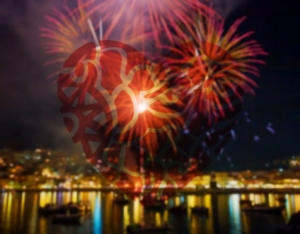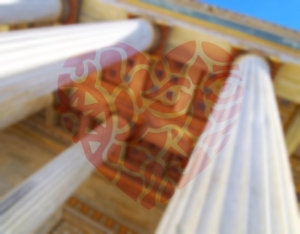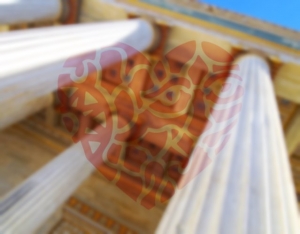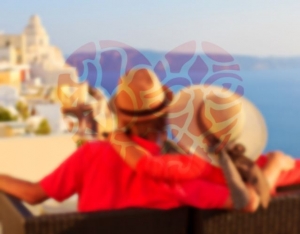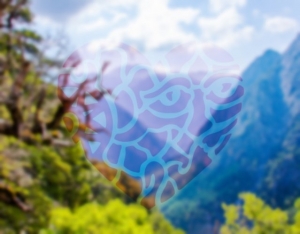Thodoris Bgenopoulos
According to findings, Leipsoi-Lipsi have been inhabited since antiquity. Archaeological excavations have brought to light fragments of pottery belonging to the Mycenaean era, while a part of a 4th century BC inscription has also been found, referring to the Ionians of Miletus. Some, based on the homophone between the names Lipsi and Calypso, attempt to identify the island with the residence of the legendary Calypso mentioned in Homer's Odyssey. However, no evidence to support this view has been found yet.
In 1088 AD a chrysobull by the Byzantine Emperor Alexios I, granted Lipsi, Patmos and the surrounding smaller islands to St. Christodoulos and the Monastery of John the Theologian. This golden bull survives to the present day in Patmos.
From 1522 on, Lipsi follow the fate of the rest Dodecanese and get under Ottoman occupation. When the Ottomans occupied the island in 1669, several Cretans left their island and some of them reached Lipsi and founded the settlement that exists today.
Lipsi island remained under Ottoman occupation until 1912, when together with the rest Dodecanese, it passed to the Italians. From 1948 on, it is a permanent part of the Greek State.
Named Lipsi known a cluster of about 30 islands and islets in the southeastern Aegean Sea belonging to the Dodecanese.
The main island is Lipsi, giving its name to the entire complex, and it is located between Patmos and Leros. The island is small in size, just 15 square kilometers, and relatively low with its highest point being Skafi, located at 277 meters. These elements combined with tranquility and natural beauty make the island an ideal holiday destination, especially for those who love hiking.
Strolling around the village, you cannot help but to admire the picturesque houses and the large church of St. John the Theologian with the blue dome and the two bell towers. Do not forget to drop by the small museum in the village center. Gaze at the boats in the harbor and enjoy an ouzo with a traditional greek meze or drink at the seaside. Walk the island, explore the beaches and do not miss Panagia Charou (Virgin Mary of Death) with its unique icon worldwide.
The people of Lipsoi are involved in agriculture, livestock and tourism suring the summer. Here is also produced an exquisite wine. Must-try! Characteristic of the island is that of the few (not even 800) residents, almost ¼ are children up to 18 years.
Based on Lipsi, you can wander around the rest islands. Either you have your own boat or you decide to charter one, wandering around the other islands and islets in the cluster will be a rewarding experience. Aspronisia, Makronisi, Megalo Kalapodi, Mikro Kalapodi, Fragos and so much more wait to be discovered.
Summers in Kimolos transform the whole island, as the population rises and the renowned "Cultural August" is organized. The festival includes concerts, musical and theatrical performances, visual arts exhibitions and many more cultural events, making your holidays in Kimolos even better!
More information on cultural events in Kimolos can be found in the Municipality of Kimolos, in the number 22870 51218.
Kimolos, like all Greek islands, maintains its customs and traditions over the years.
Easter in Kimolos is a very special experience. The procession of the Epitaph through the picturesque alleys, the Resurrection followed by fireworks and the Eastern dinner with the unique feast, are all worth experiencing in a cozy and hospitable place like Kimolos...
Several panigiria-feasts are also organized in Kimolos, mainly on religious occasion, such as:
• July 27, feast of Agios Panteleimon in Prasa
• August 15, feasts in Chorio and Psathi
• October 5, feast of Hossia Methodia in Chorio
• November 21, feast of Virgin Mary, celebrating the patron saint of the island Panagia Odigitria, in Chorio
The Folklore Museum of Kimolos is in the Castle of Kimolos.
Manolis Christoulakis inspired this creation, aiming to collect, retain and present the cultural heritage of Kimolos.
Upon visiting the two-storey building of the Folklore Museum of Kimolos, you will admire:
• Traditional wooden furniture
• Weaving, embroidery and other folk art objects
• Agricultural tools
• Shoemaker tools
• Several utensils(plates, glasses, vases etc)
• Unit dedicated to Kimolos' marine tradition
• Paintings and old photographs
There is no doubt that a visit to the Folklore Museum of Kimolos will give you a clear image of how life in Kimolos used to be.
The Archaeological Museum of Kimolos is in Chorio on Kimolos island.
The museum is housed in a two-storey building in the traditional village, hosting findings from excavations in the cemetery of the ancient city of Kimolos and other parts of the island.
The exhibits in the Archaeological Museum of Kimolos date from the prehistoric to the Roman times and among them you will see:
• Stone tools
• Pottery
• A marble crater
• Marble figurines
• A column depicting a woman
• Numerous burial findings (pottery, sculptures, metal objects, etc.)
All exhibits are accompanied by maps and photographs of the discovery site, and explanatory signs so that the visitor can have a more complete image of the ancient Kimolos.
If you're spending your holidays in Karystos, it is definitely worth-visiting the Archaeological museum of Karystos! More information about the Archaeological Museum of Karystos can be found in the number 22870 51719.
The Castle of Kimolos is situated in Chorio.
This Castle was the initial fortified settlement, around which today's Chorio developed. It was constructed in the venetian era, so as to protect the island's residents from the frequent and destructive pirate raids.
The Kimolos Castle consists of two concentric housing complexes, with one (called "Mesa Kastro" = "Inner Castle") being within the other ( Ekso kastro = "Outer Castle"). The houses had two floors and they were closely built, with their external walls being also defensive walls for the whole village. The inner castle (Mesa Kastro) is deserted, while the outer castle (Eksw Kastro) still has many houses and two gates. Actually, the Folklore Museum of Kimolos is right next to one of them. Extra tip: If you want to guess how old a house in Chorio is, you just have to take a look at how close to the center of the Castle this is. Usually, the closer to the Castle, the older the house. As you wander around Chorio, it is inevitable not catch a glimpse of the Castle, since Chorio is really the Castle.
Gerakias Cave is in the northern part of Kimolos island.
This Cave is in the namesake cape and you can either reach it with your own boat or with a water taxi, as long as weather is good. Swimming in these turquoise waters and exploring the cave is a once-in-a lifetime experience worth living!
Skadi is located in the western part of Kimolos island and it probably is the most famous sight in Kimolos.
Skiadi is actually an impressive mushroom-like geological phenomenon, as water and wind have eroded its base. If you want to reach Skiadi, you'll have to hike for quite some time, but it is so beautiful and unique that it is without a doubt worth the effort.
Besides Skiadi, Kimolos has several other interesting geological shapings and rocks that wait for you to discover them. Don't forget to take a picture!
Kimolos is one of those islands that will get you in touch with nature, no matter what.
Swim in amazing waters, sunbathe at beautiful beaches until you melt or dive to explore the magical bottom. If you wish so, you can also try scuba diving or go fishing with rod or fishing line from the island's cliffs. The sound of waves will be your true companion until the first catch.
When you get tired of the marvellous sea, try hiking. Walk the marked trails of Kimolos and discover churches, windmills and the enchanting natural beauties. During your wanderings, do not forget to pass by Skiadi, an impressive geological phenomenon and probably the most famous attraction of the island.
The activities in Kimolos may seem few compared with a cosmopolitan island, but one thing is sure; here you will enjoy your days up the last second.




